Halloween in Spain: How is Halloween Celebrated in 2024?
Disclaimer: Links on this page may be affiliate links. If you make a purchase after clicking a link, I may receive a small compensation to help power my site at no cost to you.
Does Spain celebrate Halloween? Is it the same as in the United States? Let’s jump right in!
When I was living in Spain, I was surprised when a friend invited me out for Halloween.
Being an American holiday, I had assumed that Spain didn’t celebrate Halloween.
However—seeing as Spaniards know how to party better than anyone else—I don’t know what I was thinking!
Although Americans associate Halloween with costume parties, trick-or-treating, and spooky decorations, I soon learned that Spain’s Halloween has a life of its own.
If you’re an expat or traveler looking to celebrate Halloween in Spain, this article will provide you with everything you need to know—from the history of Halloween in Spain to the various ways you can observe Halloween throughout the country.
Do They Celebrate Halloween in Spain?
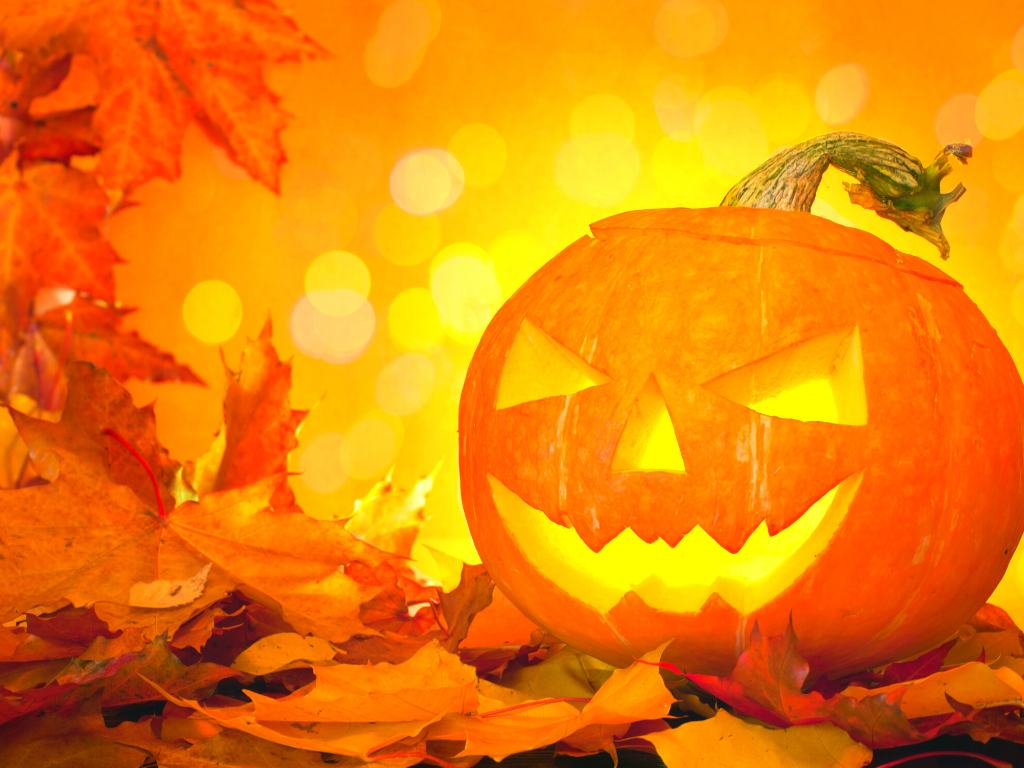
Yes, Spain does celebrate Halloween. But, it is important to note that Spanish Halloween is not celebrated in all the same ways as in the US.
Intertwined with other holidays and centuries-old traditions, Spanish people have a unique way of celebrating Halloween.
To clarify, Halloween in Spain is considered a three-day celebration.
The festivities begin October 31st with Día de las Brujas (Day of the Witches). This is when you’ll see a lot of the typical Halloween activities—like dressing up or going to Halloween parties—taking place.
Halloween celebrations then continue with two religious holidays: Día de Todos los Santos (All Saints Day) on November 1st and Día de los Difuntos (All Souls Day) on November 2nd.
While some Halloween Spain traditions are universal, others are regional. Yet again, some Spanish people don’t celebrate Halloween at all.
But, the fact remains that Halloween is gaining popularity in Spain. Google searches for “Halloween en España” quadrupled between 2004-2015 (Source: epdata.es) and more and more people are reveling in the festivities and the opportunity to have fun with friends and family.
Origins of Halloween in Spain
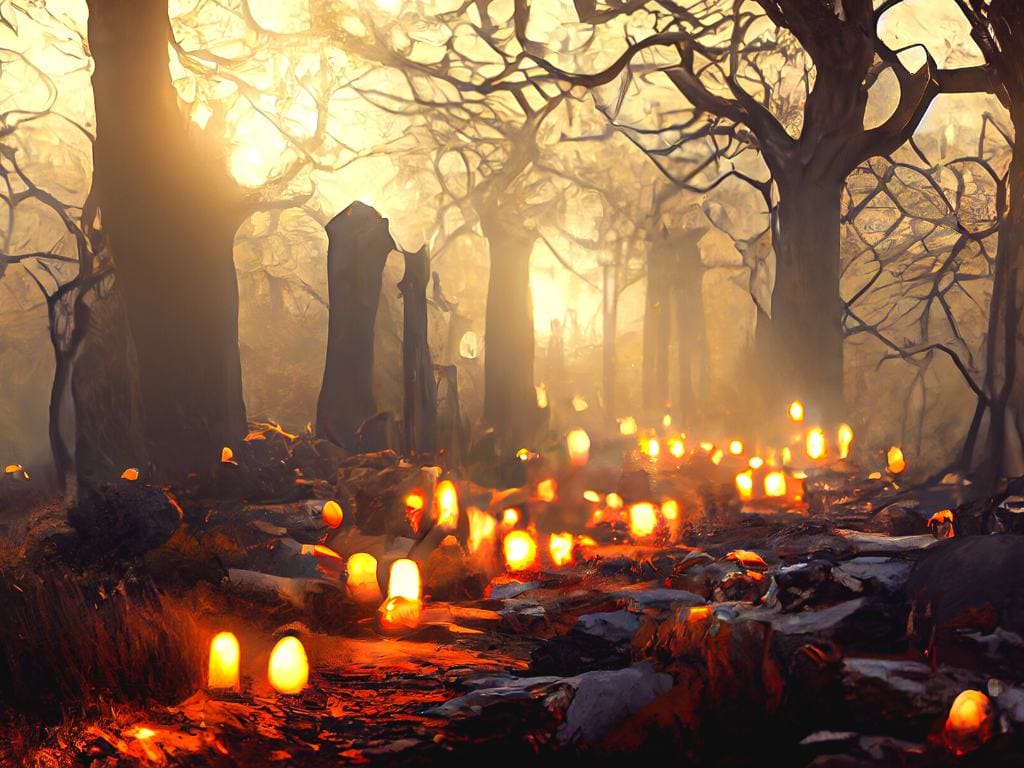
Halloween is not a traditional holiday in Spain, but it’s steadily getting more popular—especially among young people and children who see it in American movies and television.
The origins of Halloween in Spain can be traced back to the Celtic festival of Samhain, which marked the end of the harvest season.
The Celts believed the boundary between the living and the dead was blurred during Samhain. Thus, ghosts and spirits could return to the world of the living. To ward off these evil spirits, Celts dressed up in furs, cloths, and masks.
They also placed candles inside empty turnips, a tradition that later turned into pumpkins as they were plentiful.
Although the holiday has Celtic origins, Halloween was brought to America by Irish emigrants during the Great Famine of 1845.
Since then, it has been commercialized into Halloween as we know it today—a fun-filled day of costumes, decorations, parties, and candy—and adopted into many different cultures.
It’s worth noting that while All Saints Day and All Souls Day have long been observed in Spain, celebrating the preceding day (Oct 31) is a relatively new phenomenon.
That being said, some regions like Galicia have a long history of Halloween celebrations owing to their ancient Celtic ties.
How Does Spain Celebrate Halloween?
In this section, we’ll explore Spain Halloween traditions.
All Saints Day & All Souls Day
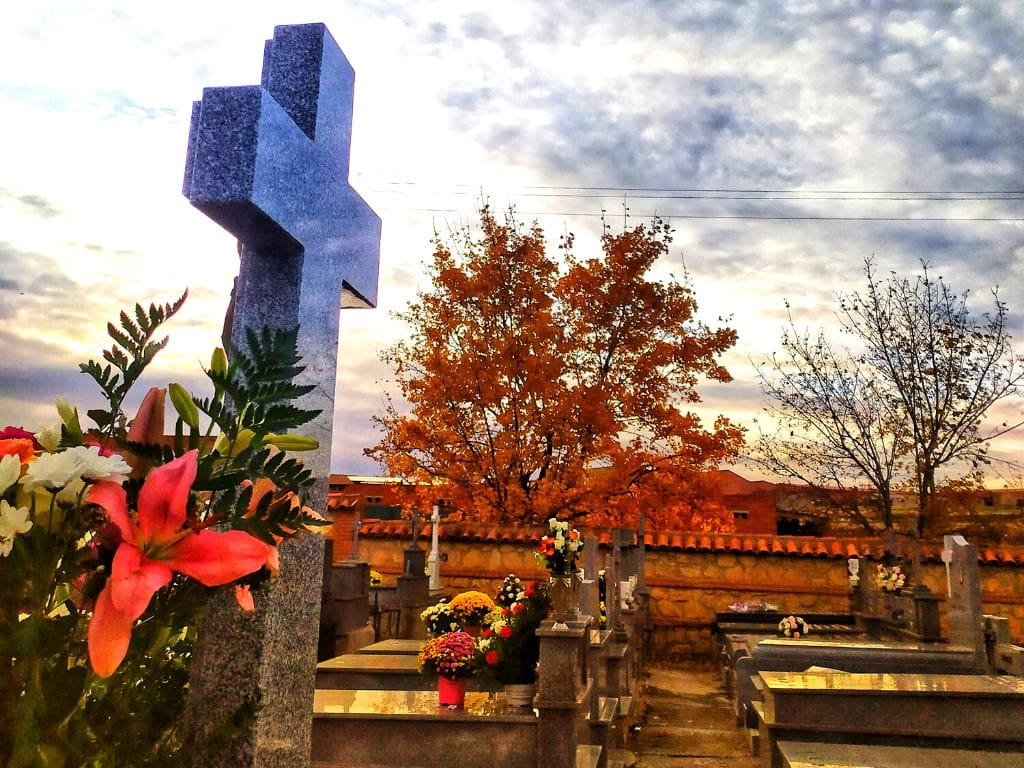
One thing is for certain, Halloween in Spain is intertwined with the two Christian holidays that follow it.
November 1, All Saints Day, is a public holiday in Spain. Schools and most businesses will be closed, so take note if you’re planning to visit!
All Saints Day is a Christian holiday celebrating the sanctification of the deceased and their eternal life in the presence of God. People from all over the country return to their hometown or village to lay flowers on the graves of their loved ones. They may also attend mass, which can be held in the cemetery several times a day.
It’s a solemn and important day for many Spaniards.
All Souls Day is held the next day, November 2nd. It’s not a holiday, but it is a religious day on which the memory of the deceased is also honored with flowers, religious ceremonies, and spending time together as a family.
Halloween Costumes in Spain
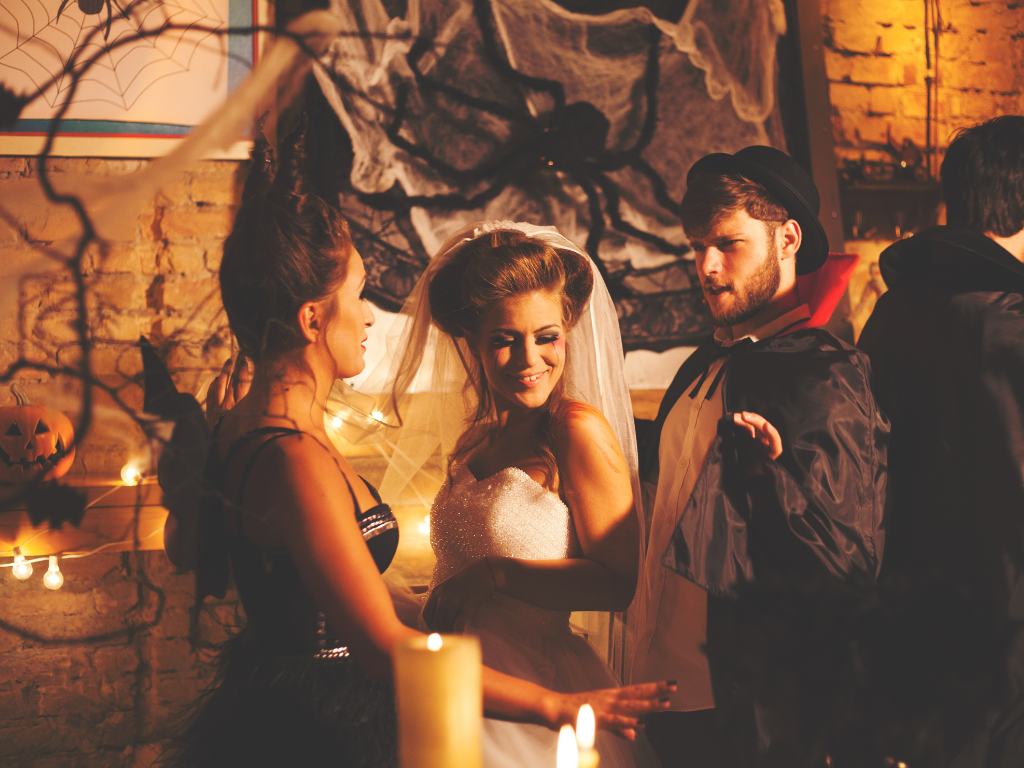
Like other parts of the world, Halloween in Spain is a time when people dress up in costumes.
However, unlike in the United States where costumes can be anything, costumes in Spain are typically scary—the spookier the better.
When it comes to Halloween costumes in Spain, popular costumes include zombies, ghosts, witches, skeletons, monsters, corpse bride, dead mariachi, Mexican skull, joker, or a killer clown.
According to a study by Idealo collected by SelfBank, Spaniards spend an average of 20 euros on the typical costume. Women make the most purchases, according to online costume shop Funidella. But men also buy costumes (33% of sales are attributed to men on the site).
Halloween Parties in Spain
In densely populated cities like Madrid and Barcelona, or university cities, Halloween is a perfect excuse for a late-night celebration.
Many clubs, bars, restaurants, and accommodations will hold theme nights, specials, costume parties, pub crawls, etc.
And of course, while fun, this also has a nice effect on these businesses’ bottom line.
In fact, according to the Spanish Federation of Hotels and Restaurants (FEHR), profits on Halloween night increase by approximately 5% compared to usual holidays.
Hence, more and more of them opt to celebrate Halloween in some way.
Spain Halloween Special Events
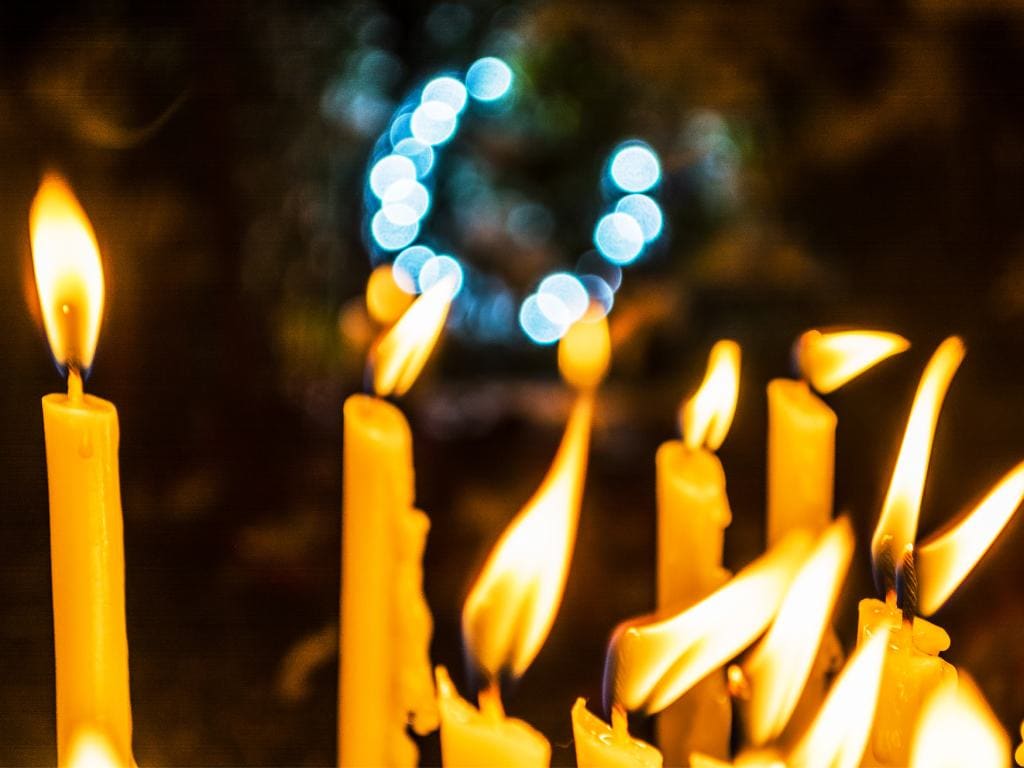
There are several special events that take place during Halloween in Spain.
It’s traditional to watch a production of Don Juan Tenorio around All Saints Day, although the origin of the tradition is unknown. This play by José Zorrilla is a drama about Don Juan, the arrogant and frivolous man who’s willing to do just about anything to get the woman he wants—at the cost of eternity, perhaps?
If you can make it to a performance of Don Juan Tenorio during Spanish Halloween, take advantage of the opportunity!
In several cities in Spain, residents walk silently through the streets in silence, carrying candles to honor the memory of the dead on the night of October 31st.
Of course, there are plenty of regional differences when it comes to events. We’ll get into more detail in later sections, but there are many different types of events that take place during Halloween from traditional festivals and fairs to special events at the theme parks and more.
Trick or Treating in Spain
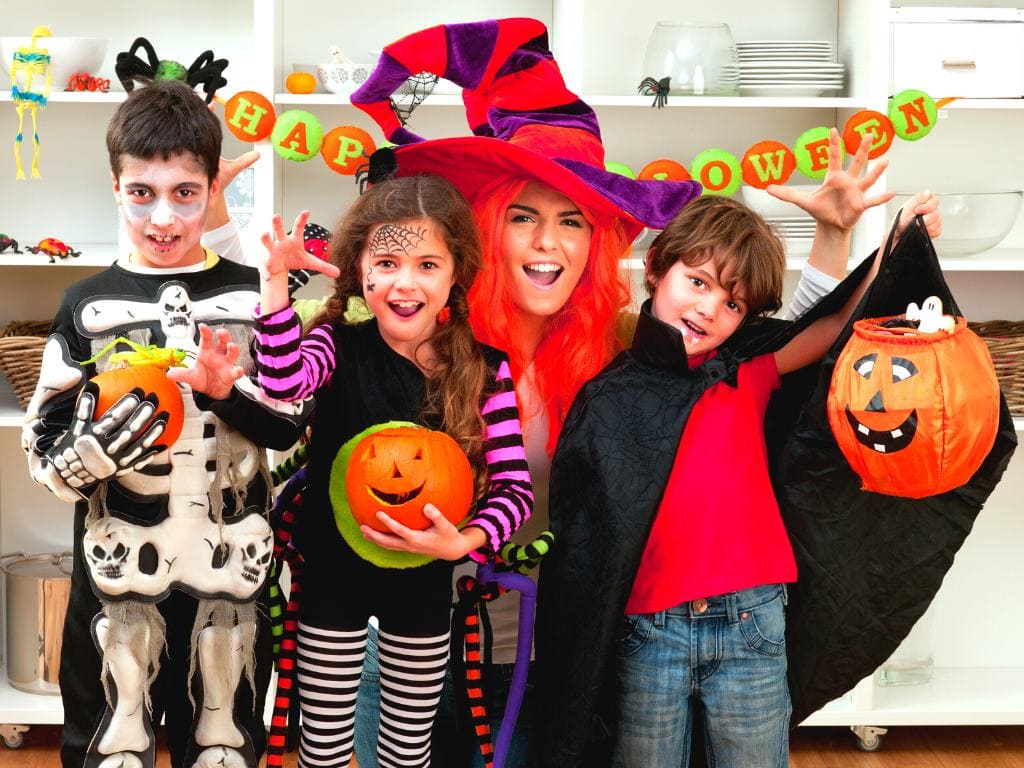
In Spain, the famous tradition of “trick or treat” (truco o trato) is not as common as in the USA (where you can go to just about any neighborhood and knock on doors for candy).
Nevertheless, some children dress up in scary costumes and go trick or treating. Oftentimes, this is pre-arranged with neighbors, friends, or family. Yet again, others say they have candy on hand because kids will inevitably come by.
Some schools or communities have adopted Halloween-themed activities and events where you can get your candy fix, too.
Traditional Foods and Sweets
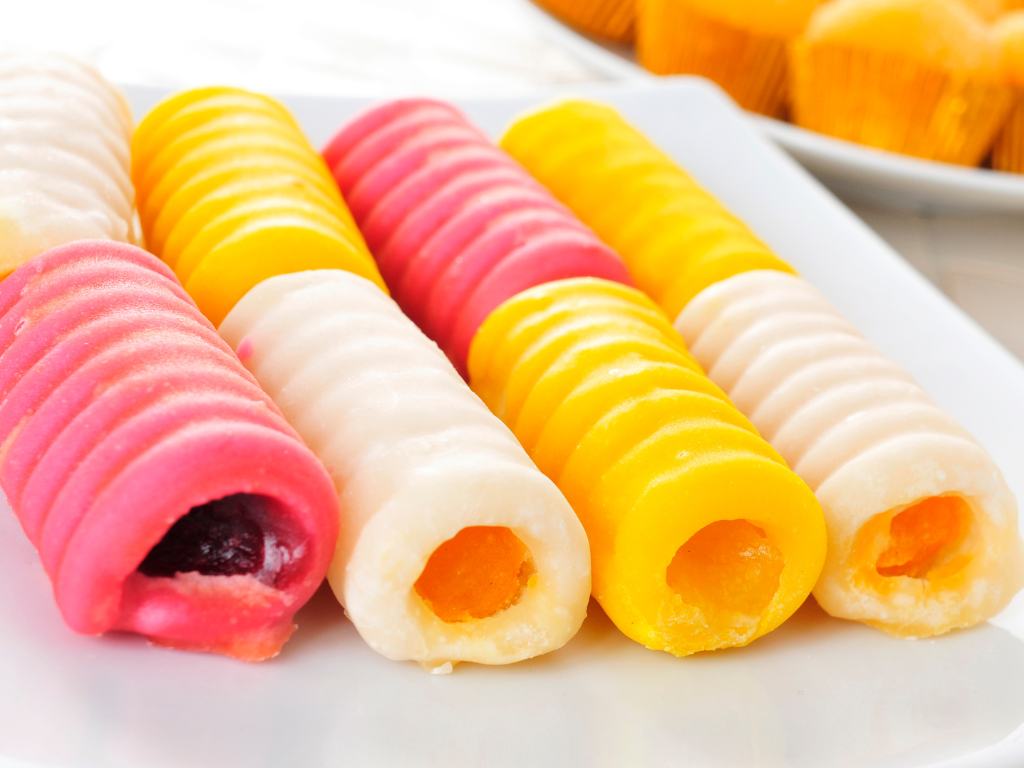
In Spain, Halloween traditions involve a delicious range of food and sweets.
Undoubtedly the most popular of all the festive foods is Huesos de Santo (Saint’s Bones).
Traditionally eaten on All Saints Day, these marzipan rolls are shaped like cut-up bones! The traditional sweets are filled with custard, but now you can find any flavor your heart desires.
While traditionally from northern Spain, Saint’s Bones are widely prepared all over Spain.
(It’s fun that “bones” coincide with Halloween, isn’t it?)
Another common sweet of the season is buñuelos de viento (puffs of wind fritters). These are little donuts balls. While they are traditionally unfilled, you can find them in different sweet or savory flavors—even pumpkin at this time of year.
Buñuelos are so common that up to 500,000 kilos are sold in Madrid each year (Source: Ceeap & Asemac)!
Panellets are also commonly eaten in Spain, although traditionally Catalan. These sweets are made from a dough consisting of sugar, ground raw almonds, egg, and lemon zest covered with pine nuts.
Other seasonal fare include:
- Roasted chestnuts (castañas)
- Roasted sweet potatoes in Catalonia
- Pestiños (honey-glazed fritters) and gachas de leche (porridge) in Andalusia
- Sweet quince (sweet, thick jelly made from the quince fruit) in Extremadura
- Arrope in Murcia and Alicante (cold dish of figs, melon, quince, and sweet potato)
- Borrachillos (sweet rolls) in Andalusia
Halloween in Northern Spain
On the night of October 31st, many areas in northern Spain such as Galicia, Asturias, Cantabria, and Aragon celebrate a traditional festival known as the castañada.
These traditional autumn fairs (which have different names by location) coincide with the chestnut harvest. Here, you can enjoy the roasting of chestnuts on a bonfire along with other typical seasonal fruits and vegetables and a range of local festivities.
Below are some more famous Northern Spain Halloween traditions:
Halloween in Galicia
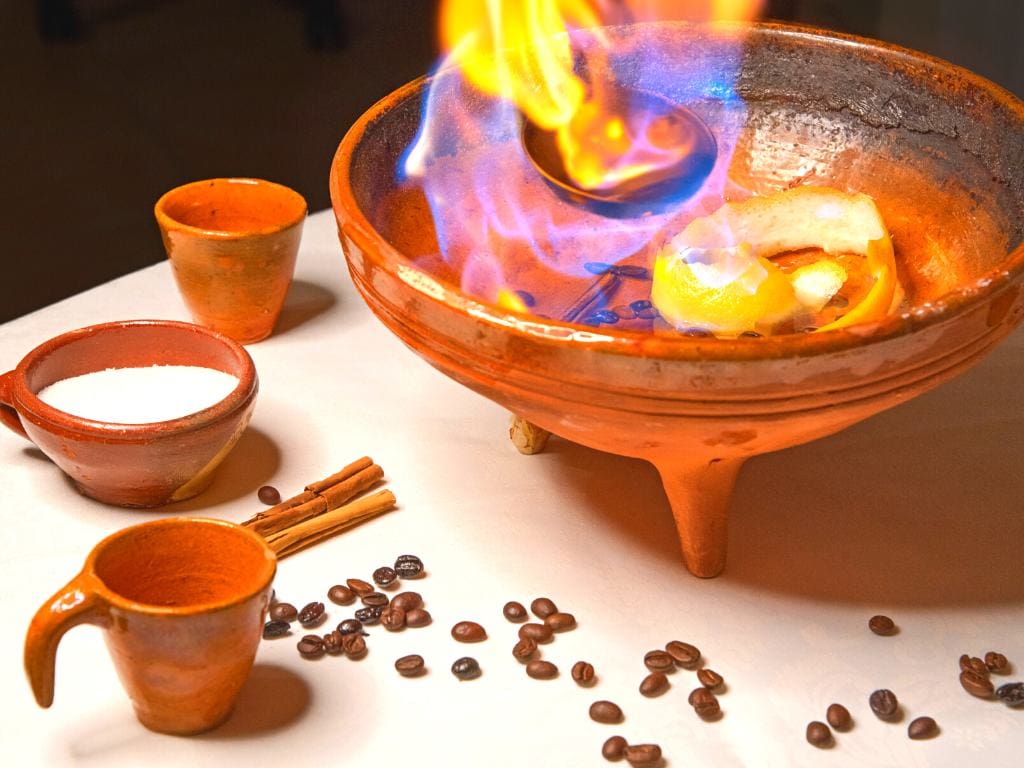
In Galicia, where Celtic traditions still carry on, Halloween is celebrated with more enthusiasm than in the rest of the country.
In Galicia, October 31st is celebrated as the “Night of the Pumpkins” or “Noite dos Calacús“.
This celebration includes dressing up, pumpkin carving, burning bonfires, eating chestnuts, mysterious rituals—at least to the outsider—and sometimes trick or treating (for kids).
Drinking queimada is a Galician Halloween tradition dating to the 11th century you won’t want to miss. A strong alcoholic drink, usually made from aguardiente, unground coffee beans, sugar, and lemon rind or orange peels, what sets it apart is the ritual of drinking it.
To explain, the queimada is set on fire after reciting a spell (esconxuro)!
Another haunting event in Galicia & Asturias is the Santa Compaña procession. Deeply rooted in folklore, a person carrying a cross and water cauldron is followed by hooded men, singing and praying as they march by candlelight through the village. It’s said that they are either escorting souls or warning of impending death!
The eerie celebration coincides with Oct 31, as that’s one of the few nights it’s said for the Santa Compaña (the presence of the dead in the world of the living) to appear!
If that’s not a creepy way to celebrate Halloween in Spain, we don’t know what is!
If you decided to walk the Camino de Santiago in October and November, make sure you take time to experience Halloween on the Camino!
Halloween in San Sebastian
If you’re a fan of horror films, San Sebastian during Halloween is the place to be! Each year, the streets of San Sebastian come alive during the Horror and Fantasy Film Festival.
Running since 1990, this is no ordinary film festival. While horror and fantasy features, short films, and even movies for kids are screened, the festival also takes place outside the cinema to coincide with the celebration of Halloween and All Saints Day.
You’ll find all sorts of street performances, music, comic encounters, master classes, competitions, and exhibitions taking place in the Old Town!
How is Halloween in Southern Spain celebrated?
In Southern Spain, Halloween is celebrated with a more traditional approach.
Halloween in Málaga

Málaga has really taken Halloween celebrations to a whole other level. So, if you really want to experience Halloween in Spain, you may want to consider visiting Málaga over Halloween week.
The whole city will be filled with costumed witches, zombies, and vampires as there are plenty of activities for kids and families. For example, Soho and Muelle Uno hold events with activities like face-painting, games, live music, and other surprises.
If you’re interested in a more chill Halloween, simply take the time to admire all the creative window displays before stopping at a restaurant or bar for a Halloween-themed special. Whether on Calle Larios, Málaga’s main shopping street, in Soho, or in residential neighborhoods, it seems malagueños enjoy decorating for Halloween!
The English Cemetery, the Botanical Garden, and Cortijo Jurado (Málaga’s haunted house) all organize terrifying evening events. Head there (in costume) if you’re in the mood for a good scare! (Check age limits as some events are adults-only.)
With all the great shopping in Málaga, it won’t be hard to find a costume, either. Gato Negro, Party Land, and Carrasqilla are good places to start.
We also recommend renting a car with Discover Cars and heading to a fall harvest festival in the Serranía de Ronda. The annual Fiesta de la Castaña y el Vino (Wine and Chestnut Festival) in Yunquera and the Pujerra Chestnut Festival are two noteworthy fairs held in late October and early November. Wander the artisan markets, listen to traditional music, and sample chestnuts in many forms (candied, roasted, etc.) before returning to Málaga for Halloween night festivities.
Halloween in Seville
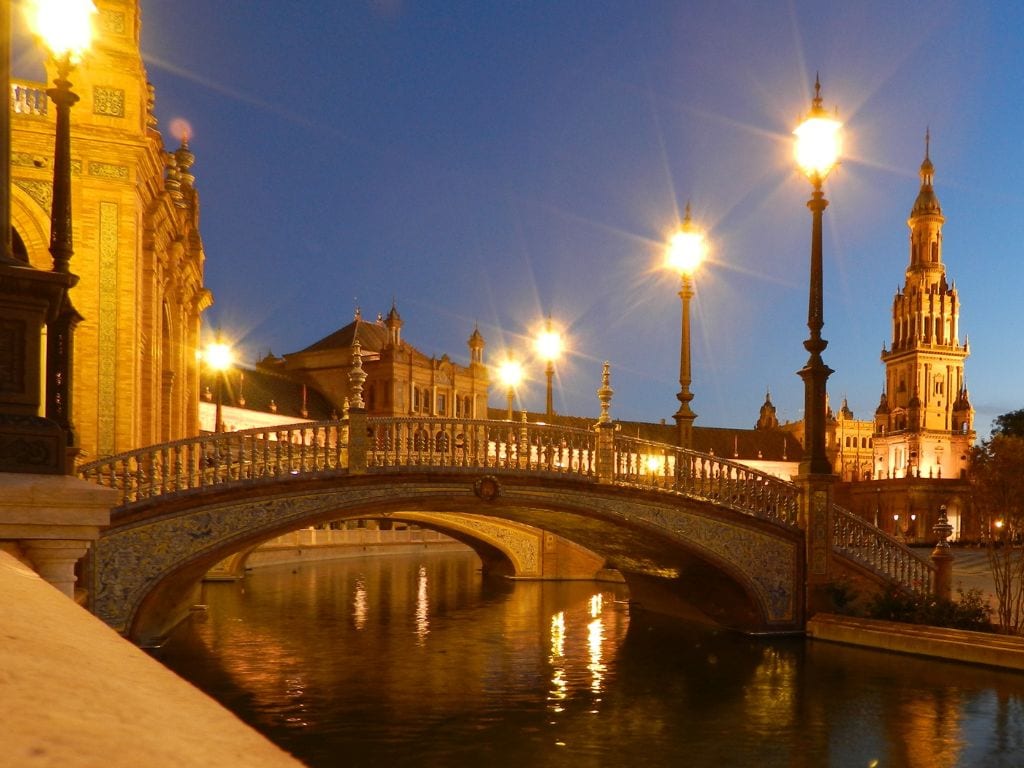
If you’re in Seville on the spookiest night of the year, there are some great things to do!
One of the best ways to get to know Seville’s sinister side is to take a historical walking tour to get to know the darker side of Seville’s history. This paranormal walking tour of Seville’s Old Town dives into unexplained tales of ghosts, nuns, witches, and more on an intimate night tour.
If you’re traveling with kids, put Isla Magica on your itinerary. Between late September and early November, the theme park turns into a spooky Halloween playground full of ghostly creatures. Enjoy haunted houses, light shows, and parades with the whole family. Scary costumes are highly encouraged!
If dressing up and going for drinks is more your scene, there are plenty of clubs and bars offering Halloween costume parties—some even with costume contests!
Halloween in Cádiz
One of the best parties in the country during All Saints Day and All Souls Day is the Fiesta de Tosantos in Cádiz.
While the traditional elements of visiting the tombs of loved ones stand, the gaditanos (locals of Cádiz) also hold a variety of parades, candle-lit processions, performances, fireworks, and street markets.
Political and social commentary is the main theme of the event, with both satirical performances and elaborate market displays alluding to current events on display.
Halloween in Central Spain
Halloween in Madrid
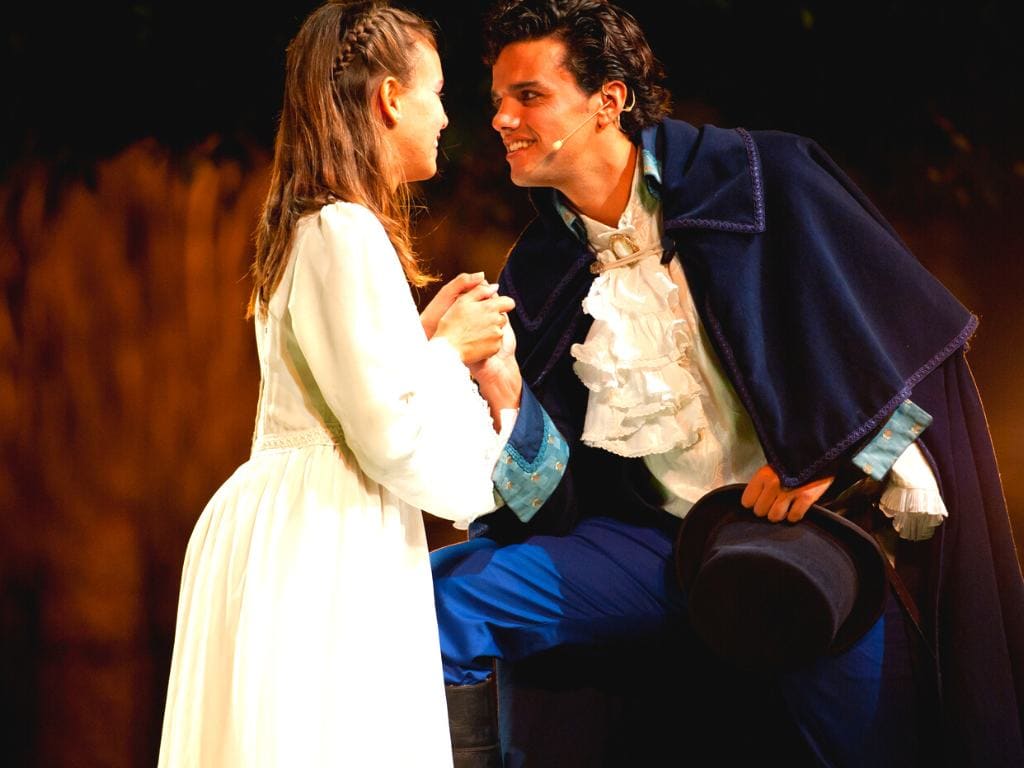
In Madrid, Halloween is celebrated with lots of Halloween decorations, activities, events, and people in costume.
To explain, more than 10,000 establishments decorated for Halloween in 2017, and close to 700,000 people went out (Source: Asociación Empresarial de locales de ocio de la Comunidad de Madrid)!
Here are a few things to do in Madrid on Halloween:
Families can hit the local theme parks. Warner Park and Parque de Atracciones are both known for their horror-themed shows and spooky attractions during this time of year.
History buffs will love this ghost stories of Madrid tour. Learn all about events from the Spanish Inquisition along with tales of torture, ghost stories, and other macabre legends from a local guide.
Of course, there will be a Halloween bash for adults at many local establishments. Look for a gory costume at a local shop like Fiestas Paco, Maty, and Fantástica.
If you’re a true horror fan (or maybe you just love the game Clue!), La Casa de los Horrores de Aranjuez is a terrifying overnight experience you can’t miss. Immerse yourself in a night of thrilling games, while enjoying good food and company!
Halloween aside, madrileños also celebrate All Saints Day in the traditional manner: bringing candles and flowers to the cemeteries where their loved ones are buried. Black clothing is appropriate as is eating traditional sweets with family and friends.
Just 40 minutes from Madrid, Alcalá de Henares does a spectacular representation of Don Juan Tenorio. The work comes to life as it’s performed outdoors in 5 places in the town, including the cemetery! Don’t miss it!
Halloween on the Mediterranean Coast of Spain
Halloween in Barcelona (Catalonia)
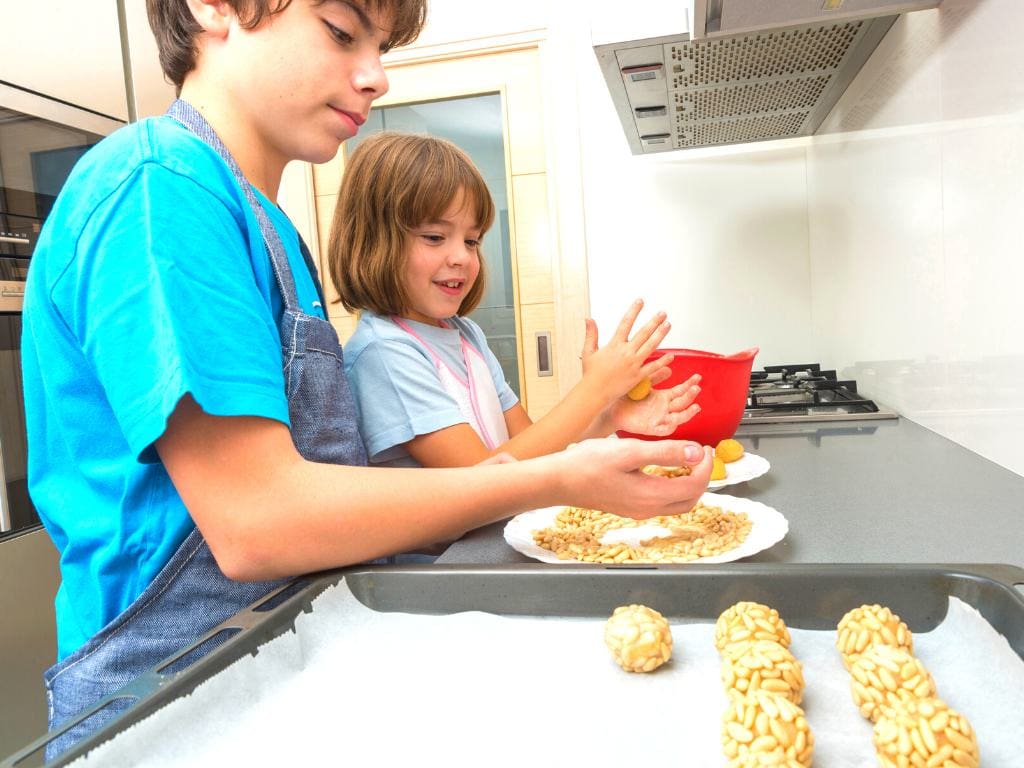
Barcelona is teeming with Halloween festivities. Here are some of the top things to do in Barcelona on Halloween:
Party-goers will be delighted to find all sorts of clubs, restaurants, and bars holding themed events, costume contests, and pub crawls.
If Halloween bashes aren’t your style, why not take a Barcelona Ghosts & Legends Tour? Wander Barcelona’s Gothic Quarter where a local guide will share tales of ghosts, exorcists, wandering spirits, and bloody murders!
If you’d rather skip the tour, consider doing the Barcelona ghost hunt with some friends on Halloween night! Available 24/7 using your smartphone, this interactive app will lead you to discover the legends of Barcelona’s lost souls and tormented spirits in areas like the Gothic Quarter, Las Ramblas, and Catalunya Square!
Now, that sounds like spook-tacularly good time! Sign up for Barcelona Ghost Hunt.
On the other hand, families can enjoy workshops, kids’ activities, terrifying decor, a haunted cemetery, and the “Tunnel of Terror” at Poble Espanyol. Festivities are typically held during the entire Halloween week at this popular open-air cultural center.
Don’t forget to keep an eye out for La Castanyada celebrations and decorations, too, for All Saints Day. Stalls serve traditional delicacies like roasted chestnuts, sweet potatoes, and panellets (almond pastries), and families will visit the deceased at the cemetery.
If you’re up for a day trip from Barcelona, head to nearby Sant Feliu Sasserra. The village holds a two-day Witch Festival (Fira de les Bruixes) beginning the night of October 31st. Join the parade running through the village’s darkest corners, and admire the traditional dancers, street artists, and market stalls.
Halloween in Valencia, Spain
On the whole, Halloween isn’t widely celebrated in the Valencia community.
Instead, Valencians participate in La Nit de les Ànimes (the Night of the Souls) on November 1, where they light a candle in memory of the deceased.
However, some people dress up in costumes and go to parties at clubs or bars or attend special events. Trick or treating is also becoming more well-known amongst valencianos.
Halloween in Alicante

In Alicante, where around 20% of the population are ex-pats (Source: euroweeklynews.com), Halloween is celebrated in a more contemporary way. More and more people are dressing up and heading to organized events and parties. Trick or treating is even becoming more popular.
The main festive celebration in Alicante, however, is the Feria de Todos Los Santos (La Fira de Tots Sants). Over 800,000 visitors participate in the 4-day event that’s held in nearby Concentaina.
The event has something for everyone: souvenirs, local dishes, an agricultural part, traditional Arabic and Christian markets, animal areas, and attractions for children. Feel free to dress up, and enjoy the festivities!
In the evenings, look for candles in the windows of Alicante residents. Some Alicantinians put candles in the windows to mark the path for departed souls starting on October 28.
Is Halloween Celebrated in Spain FAQs
Here are some frequently asked questions about Halloween in Spain:
What is the Spanish name for Halloween?
The equivalent for Halloween in Spanish is Día de Brujas which means Day of the Witches. Noche de Brujas is also common in Latin America. The English word, Halloween (said with a Spanish accent) is often used, especially in the larger cities where the holiday has become more international and commercialized. See more Halloween vocabulary in Spanish.
What is the difference between Day of the Dead celebrations in Spain and Mexico?
While both celebrations honor the dead, the Day of the Dead in Mexico is a festive and colorful celebration of the dead with Aztec origins. Spain celebrates All Saints Day and All Souls Day November 1-2, which is a somber Christian holiday where Spaniards lay flowers and candles on the graves of their loved ones.
Is the Day of the Dead celebrated in Spain?
No, they do not celebrate the Day of the Dead (Día de los Muertos) in Spain. The Day of the Dead is celebrated in Mexico, where it originated. Much of the United States has adopted the tradition in recent years, especially after the success of the movie Coco. As well, a few Latin American and Caribbean countries celebrate the Day of the Dead.
How do they celebrate Halloween in Spanish-speaking countries?
Halloween celebrations in Spanish-speaking countries vary depending on the country. Some countries have adopted American Halloween by celebrating with costumes, parties, treats, and other events.
What are the most famous Spanish holidays?
The biggest Spanish holidays include Christmas and Holy Week. All Saints Day, Easter, and Corpus Christi are all important holidays, too.
What is Holywins?
Holywins (la Santidad vence) is a pun that means “Holiness wins” or in Spanish. Created in 2002 in Paris, it spread to Spain later in the decade. Holywins was created to give a way to celebrate October 31st in a Christian way. Parishes and Catholic schools invite children to learn about and dress up as their favorite saint.
Halloween Spain Conclusion
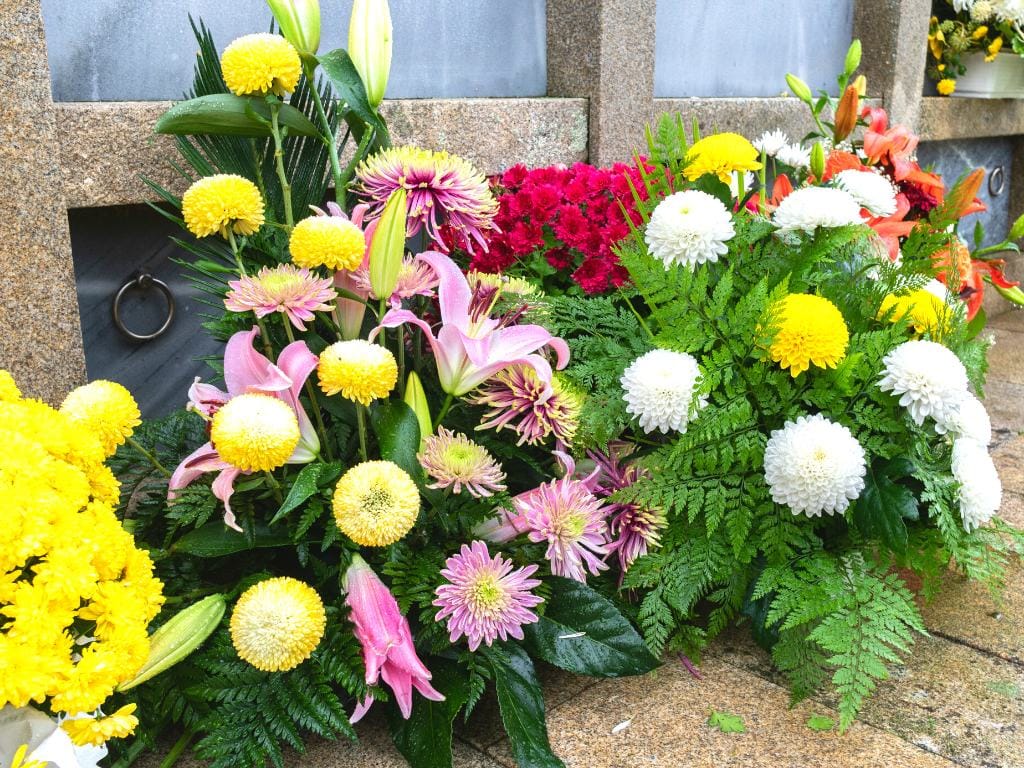
It’s apparent Halloween has taken root in Spain, with each autonomous community having its own traditions and events related to the 3-day festivities.
Whichever way you decide to celebrate, have a spooktacular Halloween in Spain!
More on Visiting Spain in the Fall
Looking to visit Spain this fall? Check out these posts!
- Halloween Words in Spanish
- Black Friday in Spain
- Spain in the Fall
- Spain in October
